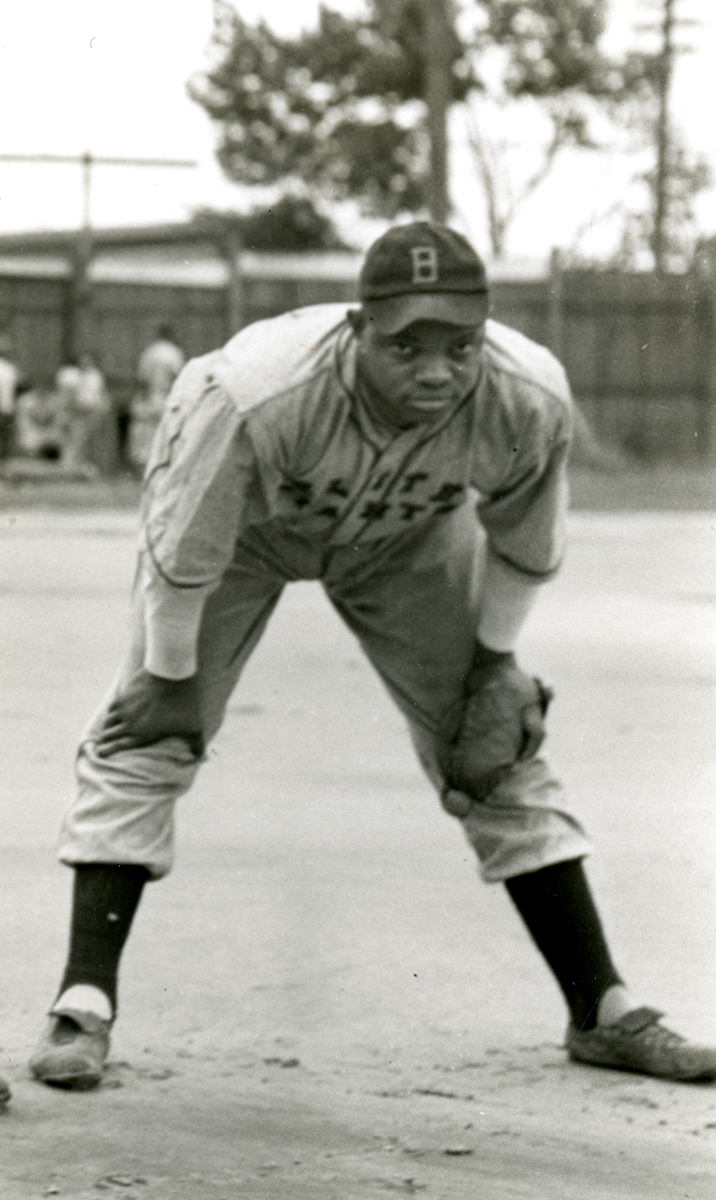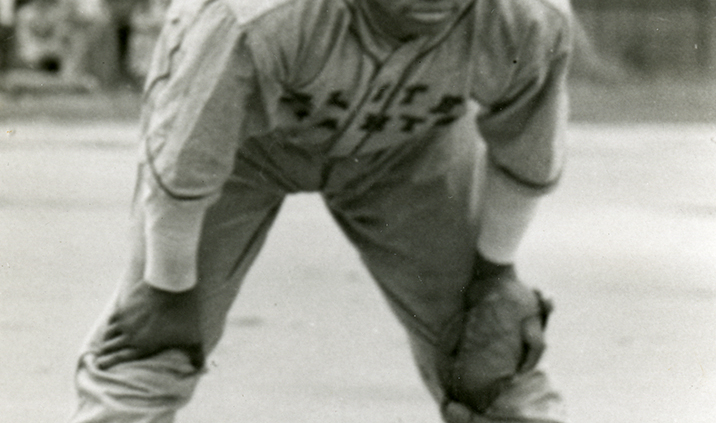Jim West
 When and where someone happened upon a young infielder named Jim West is imprecise. It may very well have been in 1929, when he played for the Birmingham Negro Industrial League.1 Although lacking details of West’s early life and baseball career, his fine play at first base – perhaps noted by Bill Gatewood – prompted Clarence Smith, manager of the 1930 Negro National League Birmingham Black Barons, to invite him to spring training. The Birmingham News reported: “From the City League at home, the Barons will take with them James West who can field around first base with the best in any league. If he fails to make the grade, it will be because of his hitting.”2 Thus, the switch-hitting, 6-foot, 218-pound ballplayer began his career in professional baseball, and by 1931 his prowess at first base received attention: “West (when on the field is a ringer for Flournoy Miller3 in black face) is a better first baseman than several whom I can name but won’t name.”4
When and where someone happened upon a young infielder named Jim West is imprecise. It may very well have been in 1929, when he played for the Birmingham Negro Industrial League.1 Although lacking details of West’s early life and baseball career, his fine play at first base – perhaps noted by Bill Gatewood – prompted Clarence Smith, manager of the 1930 Negro National League Birmingham Black Barons, to invite him to spring training. The Birmingham News reported: “From the City League at home, the Barons will take with them James West who can field around first base with the best in any league. If he fails to make the grade, it will be because of his hitting.”2 Thus, the switch-hitting, 6-foot, 218-pound ballplayer began his career in professional baseball, and by 1931 his prowess at first base received attention: “West (when on the field is a ringer for Flournoy Miller3 in black face) is a better first baseman than several whom I can name but won’t name.”4
James West was born to Andrew and Lydia West in Birmingham on April 23, 1905. According to the 1910 US Census, Jim, at 6 years old, was the sixth of six children. Andrew was 50 years old when he married 28-year-old Lydia. Lydia died on September 3, 1909. Andrew remarried on April 18, 1910. He married a woman identified on the marriage license as Mrs. Rena Wilson. In 1910, Jim’s siblings ranged in age from 9 to 18. He had two brothers, Willie (18) and Eugene (17), and three sisters, Genella (12), Sendia (11), and Beatrice (9).5 His father worked as a switchman for the steam railway and his mother worked at home. Andrew West died on May 11, 1918, making Rena a widow. She worked as a laundress and maid until her death on October 8, 1934. As is often the case, accurate information about Negro Leaguers and their families, can be sparse – and this certainly applies to Jim West and his family. Apparently in a previous marriage Rena gave birth to a son, Robert, surname Wilson; Robert was Jim’s half-brother. A laborer for a steam railway company, Robert identifies as the “person who will always know address” of draftee on Jim’s October 16, 1940, draft card. Jim shared accommodations with his family until his marriage, on June 26, 1930, to Christine (Chrstin) McLindan (McLendon). After his marriage, he and Christine lived in Birmingham with her parents, A. Charlie and Delia McLindan.6 In the 1940 US Census he is identified as a “Base Ball Player,” employed by a Philadelphia baseball team.
In 1930, West’s first professional season, he played 12 games at first base and hit .243 for the Birmingham Black Barons, managed by Clarence Smith (34-29) and Bill Gatewood (12-19-2). By the end of June, West found himself playing for a different team at a different position. “In a trade negotiated between the Birmingham Black Barons and the Memphis Red Sox, five players changed uniforms. Harry Salmon, pitching ace of the Barons’ staff; C [sic] West, a second baseman, and Andrews, veteran pitcher went to the Red Sox for William (Nathaniel) Rogers, former American Giant and hard-hitting outfielder, and Willie Cornelius.”7 West finished the season with another Negro National League club, the Memphis Red Sox, managed by Candy Jim Taylor. There, he appeared in 31 games, playing at first and second base, and finished the season with a .255 average.
In 1931 West signed with the Cleveland Cubs. The Cubs, a NNL1 team, were owned by Tom Wilson, the original owner of the Nashville Standard Giants, a team that would be relocated and renamed five times between 1931 and 1938. Jim West played first base for each of Wilson’s teams until 1939, when he was traded to the Philadelphia Stars from the Baltimore Elite Giants. With the Cubs, West appeared in 33 games for manager Joe Hewitt, all at first base, and hit.133. The Cubs finished the season with a 26-26 overall record. In 1931 sportswriters began to notice the talent of the 26-year-old: “West, shifty Cubs first sacker, is being rated in the class of McHaskell, formerly of the Memphis Red Sox, and McAlister [sp] (McAllister) of the Birmingham Black Barons for his splendid work at the initial sack. When he stopped C. Williams’ grounder just inside the first sack in today’s game the fans went wild with enthusiasm.”8
West started the 1932 season with the Birmingham Black Barons, managed by Poindexter Williams, and played in only four games. As with his first season, 1930, West moved from the Barons to the Memphis Red Sox, now managed by Goose Curry. Whether or not this came from another trade is not clear. However, he drew attention in his first game with the Memphis Red Sox: “This West boy is the new first baseman, secured from Birmingham last Friday (May 6), where play was the feature of the whole series just closed.”9 The team finished with an overall record of 29-28, and he played in 32 games, hitting .248. With the demise of the Negro National League, both the Barons and Red Sox joined the Negro Southern League.
Gus Greenlee successfully created and introduced the second Negro National League in 1933. The Nashville Elite Giants, formerly the Cleveland Cubs, owned by Tom Wilson, joined the NNLII. West played on variants – in the Negro National League, I and II, and the California Winter League – of Tom Wilson’s Giants from 1933-1939.
The 1933 Nashville Elite Giants were managed by Felton Stratton. He led the team to a 20-25-1 overall record. West, at first base, appeared in 37 games and hit .224. Candy Jim Taylor managed the 1934 Nashville Elite Giants. West hit .240 in 33 games for the Giants, who compiled a 22-32-1 overall record. As in previous years and seasons yet to come, he merited high praise: “Gilchrist, Redue [Redus] and C. Hughes played well for the visitors while West, Porter, Griffin, Hughes and Bankhead were the outstanding luminaries for the Giants.”10
Tom Wilson, searching for a supportive financial population base,11 moved his Giants from Nashville to Columbus, Ohio, in 1935. West traveled with the team, still managed by Candy Jim Taylor, to Ohio. Now 30 years old, he played first base in 31 games and hit .243. The Columbus Elite Giants posted an overall record of 30-25-2.
After the 1935 regular season, West appeared in the first of six seasons in the California Winter League (CWL). He traveled to Los Angeles with Tom Wilson’s Royal Giants, managed by Candy Jim Taylor. His teammates included Turkey Stearnes, Biz Mackey, Mule Suttles, Sammy T. Hughes, and other excellent ballplayers. That team won the CWL championship, boasting a 23-6-2 record (.793), and West led all hitters with a .510 batting average. Here, he earned a new nickname: “Jim West dubbed ‘One Wing’ by west coast writers won the batting title with a scintillating .510 average.”12
The 1936 regular season saw the Elite Giants find another new home – this time leaving Columbus and relocating to Washington, DC, as the Washington Elite Giants. Once again, Candy Jim Taylor managed the team and achieved an overall 30-34-1 mark. Leading up to the 1936 East-West All-Star Game, West received attention from the press after his stellar performance at first base and at the plate for the Elites. In 43 games, with 175 plate appearances the first baseman hit .344. “This youngster, who has developed into the most sensational fielding first baseman in the history of the game, is none other than Jim West of the Washington Elites.”13 West played in one game for the East All-Stars, managed by Oscar Charleston. In three plate appearances he had one hit an=d scored one run. After the East All-Stars defeated the West All-Stars, West headed for the West Coast, with the Royal Giants, for the 1936-1937 CWL. Candy Jim Taylor and his Giants were once again league champions, with a 21-7-1 record, and West, appearing in only three games, hit .273.
The 1937 Washington Elite Giants under Biz Mackey saw a 23-37-4 overall record. West played well, and in 37 games hit .394. He also appeared in three games for the NNL All- Stars that year, under Oscar Charleston. Although he uncharacteristically hit only .083 in this series, West did have a memorable game vs. the Santo Domingo Stars at the Polo Grounds. The Santo Domingo Stars fielded a team that included Satchel Paige, Sam Bankhead, Cool Papa Bell, and Chet Brewer. With Paige on the mound, “West came to the plate with two down in the eighth and found pinch hitter Kimbro on first as the result of a single to deep left center. With the count 1 and 2, Satchel sent up his high hard one which was just what Mr. West was looking for and he promptly poled high into the left field stands for a four-baser.”14
Jim West, now 32, traveled to California for the 1937-1938 CWL, with the Royal Giants managed by Biz Mackey. This team won the CWL championship with a 21-3-1 record. And West, playing alongside Cool Papa Bell, Mule Suttles, Biz Mackey, Felton Snow, and Wild Bill Wright, appeared in nine games, hit .461, and won more praise. “It was not a bunch of amateur sandlotters on the San Diego Paris Inn team. … West, sensational first baseman getting a homer and two-bagger.”15
In 1938 Tom Wilson moved his Washington Elite Giants to Baltimore. “The Washington Elite Giants, formerly the Nashville Elite Giants, will move their franchise to Baltimore this year and will be known as the Baltimore Elite Giants. … [The team] will start training on April 2. Most of last year’s Washington squad will be with Tom Wilson’s club.”16 Jim West returned to first base, and had another fine year – in 35 games, he hit .318 in 150 plate appearances. He also garnered another nickname: “The Elites boast of the dean of receivers in Biz Mackey, Flat Foot Jim West at first, Sammy Hughes, second, and George Scales on third.”17 For the 1938-1939 CWL West, with the Philadelphia Royal Giants 11-2-1, West hit .364 in three games.
The 1939 regular season saw the Baltimore Elite Giants field a very talented nine, including Jim West, Roy Campanella, Sammy Hughes, Henry Kimbro, and Bill Hoskins. This was to be a different type of year for West, however. He appeared in 17 games and hit only .152. The team appeared to be on its way to a championship season and manager Felton Snow made some choices that impacted West. The sports pages noted that:
“Snow, a steady infielder for years, has the Elites moving at a rapid clip with new and younger charges and is out to gain the second half championship. Besides Mackey [to the Newark Eagles], the Elites traded the flashy first baseman, Jim West to the Philadelphia Stars, and Horse Walker, shortstop, made a free agent. … With the release of the three veterans, the Giants bolstered the squad with a quintet of youngsters … includ[ing] Jimmy (Red) Moore, who has been capably taking care of West’s old post at first since joining the pennant contenders two weeks ago. …”18
While the Elite Giants went on to win the NNLII Championship, West found a new home with the Philadelphia Stars, a team that finished below .500 under managers Jud Wilson (11-17-1) and Jake Dunn (13-12). He completed the 1939 season with the Stars, playing in 20 games and hitting .365. He played with the Philadelphia Royal Giants, managed by Wild Bill Wright, for the 1939-1940 CWL season. His five-game, .185 season was his final season in the CWL – World War II loomed.
West registered for the draft on October 16, 1940. While his residence was Birmingham, his place of employment was given as Philadelphia, and his employer as “Baseball Plant.” Although Jim was married to Christine McLendon at the time, the “name of person who would always know” his address was his half-brother, Robert Wilson. Records of Jim West having served in the military during World War II if they exist, could not be found.
In addition to playing for the Philadelphia Stars for the 1940 season, West played in one game for Taylor’s All-Stars in an Independent Clubs Series. He had no hits, and the team finished in third place in the series. The Philadelphia Stars, managed by Roy Parnell (5-7) and Jake Dunn (26-33), saw West play in 61 games and bat .338.
In 1941 West once again played for two teams – the New York Black Yankees, managed by Tex Burnett, and the Philadelphia Stars managed by Roy Parnell (3-14) and Oscar Charleston (14-39). He was 1-for-2 with the Black Yankees, and in 55 games with the Stars he hit .246.
The majority of the 1942 season saw West play with the Philadelphia Stars, now managed by Goose Curry (37-37-2). In 49 games, he hit .274 in 203 plate appearances. Under manager Vic Harris, West played in two games for the East All-Stars in the annual East-West Game and was 1-for-8.
In 1943 West hit .310 in 49 games for the Stars. In the North-South All-Star Game, which the South All-Stars won, 2-0, he was hitless.
In 1944, at 39 years old, West once again played under Curry for the Philadelphia Stars (38-29-1), and had a good season, hitting .358 in 51 games. With the Philadelphia Stars in 1945, he hit .269 in 51 games. Goose Curry, still the manager, completed the season with a 35-31-1 record. At some point between 1940 and 1945, Jim and Christine divorced, and by 1945 both had remarried. Jim married Geneva Brown, a button marker/trimmer for a wholesale blouse business, in Wilmington, Delaware, on February 2, 1945. They remained married until Geneva died on February 24, 1968.
In 1946 the 41-year-old West followed a new career path: “Jim West, veteran Philly Stars first sacker, has been named playing manager of the Oakland Club of the newly formed West Coast Baseball Association, it was learned this week. … West made his last appearance on the coast as a member of the Birmingham Black Barons who barnstormed here last winter.”19 The West Coast Negro Baseball Association was formed on March 9, 1946. Abe Saperstein was named president and Jesse Owens was named vice president. The league played only one season20
In 1947 West played in one game with the Birmingham Black Barons managed by Tommy Sampson. That same year he appeared in seven games with the New York Black Yankees, under Marvin Barker, and batted .267. In his final professional season, 1948, at the age of 43, he played for managers Ramiro Ramirez (35-64-6) and Albert Elliott Buster Haywood (10-14-1) of the Indianapolis Clowns of the Negro American League and in three games went 2-for-7.
West’s 18-year career included stints with multiple Negro National League (I and II) teams, a Negro American League team, independent clubs, All-Star teams, and West Coast teams. According to the Seamheads Negro League Data Base, he played in 708 games, mostly at first base. In 2,850 plate appearances he had 714 hits (.282). West was known as a “close student of the game.”21 If he dealt with injuries, they are not referenced in the sports pages. Perhaps this, from “The Sports Notepad” of June 1945, helps sum up West’s ability and perseverance: “Big Jim West, the aging character who covers first base for the Philly Stars, was credited with 14 of the first 15 putouts in Sunday’s game against the Elite Giants in Baltimore. And the youngsters were crying ’bout the heat.”22
If numerous nicknames are a sign of respect for a ballplayer, then Jim West was well thought of. As with nicknames bestowed on other ballplayers, the origins and full context of his monikers are not always clear. However, the names certainly warrant attention – including and not limited to Big Jim West, Flashy Jim West, Colorful Jim West, Flat Foot, One Wing, Shifty Jim, and Hinkey Jim West. While many of these names came from newspaper writers, his peers added a few descriptive words – for example, in a conversation with Chester Washington from the Pittsburgh Courier in 1936, Candy Jim Taylor responded to a question about the greatest “showman of Taylor’s generation, and the current game.” Taylor named his Chicago American Giants teammate, Bill Monroe, and his current day picks were Satchel Paige and his current second baseman with the Elite Giants, Jim West.”23 Asked whether Buck Leonard was the “the first baseman,” Albert Buster Haywood replied, “He was a good one, but you had Jim West. …”24 And John Gibbons replied to a question about players he came across while playing: “On my team we had Big Shifty West, we had Chet Brewer. …”25
Documentation of West’s life from 1949 to his death in 1969 is minimal. He was mentioned at least twice in columns that identified top Negro League players: in 1966, in the Norfolk (Virginia) New Journal and Guide26 and in 1969 in the New York Amsterdam News.27
Geneva died of cardiac arrest on February 26, 1968. Jim was killed on September 2, 1969, while tending bar at the M and N Piccadilly Club in Philadelphia.
According to a newspaper account: “Big Jim West, 64, who 30 years ago was one of the best-known baseball stars, is dead, slain by three young men who had not even been born when Big Jim was thrilling fans with his exploits on the diamond. … Big Jim was shot to death.28 West was buried in the Eden Cemetery, Collingdale, Pennsylvania, where Geneva had also been laid to rest.
In 1936 a newspaper wrote of West: “[W]ith his floppy old glove, his halting, stumbling slide and his Houdini touches [West] ranks head and shoulders above any man modern baseball has produced for color.” Despite the “unbelievable feats of Jim West [his] color will always remain black; but [he] would be welcome to many a major league club.”29
Sources
In addition to the sources cited in the Notes, the author consulted Seamheads.com and Retrosheet.org.
Photo credit: Jim West, Temple University’s Mosley Collection.
Notes
1 “Black Barons Off for Spring Work at Fort Benning,” Birmingham News, April 2, 1930: 14.
2 “Black Barons Leave Tuesday for Training Camp,” Birmingham Reporter, March 29, 1930: 7.
3 Flournoy Miller collection 1928-1971 [bulk 1941-1951], New York Public Library Archives & Manuscripts, https://archives.nypl.org/scm/20858.
4 W. Rollo Wilson, “Sport Shots,” Pittsburgh Courier, August 15, 1931: 14.
5 Spellings of names do vary in Ancestry.com.
6 Spelling of surname could be McLindon, McLendon,
7 “Memphis Red Sox and Black Barons Put Over Trade,” Chicago Defender, June 28, 1930: 8. This was very possibly Jabbo Andrews, but he was a right fielder and not a pitcher.
8 “A.B.C.’s Drop 3-1 Encounter to Cleveland,” Chicago Defender, June 13, 1931: 9.
9 “In Sportdom: Tuskegee Institute Alabama,” “Red Sox Win Final,” Atlanta Daily World, May 12, 1932: 5.
10 “Elite Giants Wallop Cleveland Crew Twice,” Nashville Tennessean, May 28, 1934: 8.
11 “Baltimore Elite Giants,” Negro League Baseball Museum eMuseum, https://nlbemuseum.com/history/teams/baltegiants.html.
12 William F. McNeil, The California Winter League: America’s First Integrated Professional Baseball League (Jefferson, North Carolina: McFarland & Company, Inc., 2008), 178.
13 “Jim West, Gangling First Baseman of the Elites, Fields Like Grimm, Hits Like Gehrig,” Pittsburgh Courier, August 22, 1936: A4.
14 Joe Bostic, “Taylor’s No-Hitter Tops Satchel Paige,” Baltimore Afro-American, September 25, 1937: 18.
15 “Winter League Ball Flourishes on Coast,” Baltimore Afro-American, November 27, 1937: 17.
16 “Tom Wilson Takes Club to Baltimore,” Chicago Defender, April 2, 1938: 8.
17 “Crawfords, Nashville Meet Here,” Greensburg (Pennsylvania) Daily Tribune, August 18, 1938: 7. (This article still refers to the Nashville Elite Giants.)
18 “Elites Clash with Eagles,” Baltimore Afro-American, July 22, 1939: 23.
19 “Jim West to Pilot Oakland,” Pittsburgh Courier, March 9, 1946: 16.
20 Online Archive of California, Collection Guide, “Guide to the West Coast Negro Baseball Association,” https://oac.cdlib.org/findaid/ark:/13030/c8125tf5/
21 “Jim West, Gangling First Baseman of the Elites Fields Like Grimm, Hits Like Gehrig.”
22 “The Sports Notepad,” Baltimore Afro-American, June 30, 1945: 18.
23 “Candy Jim Taylor Reminisces,” Baseball History Daily, https://baseballhistorydaily.com/tag/jim-west.
24 Brent Kelley, The Negro Leagues Revisited: Conversations with 66 More Baseball Heroes (Jefferson, North Carolina: McFarland & Company, Inc., 2000), 111.
25 Kelley, 132.
26 Jacko Maxwell, “Old-Time Negro Baseball Players – A Major League Loss: Ol’ Satch, Josh Gibson Symbols of Yesteryear,” New Journal and Guide (Norfolk, Virginia), September 3, 1966: 26.
27 Joe Black, “On Sports,” “Greatest Black Team,” New York Amsterdam News, August 9, 1969: 38.
28 “Ex-Baseball Star Slain in Bar,” Louisville Defender, September 18, 1969: A4.
29 “East-West Baseball Classic to Chicago,” Atlanta Daily Weekly, August 18, 1936: 5.
Full Name
James West
Born
April 23, 1905 at Birmingham, AL (USA)
Died
September 2, 1969 at Philadelphia, PA (USA)
If you can help us improve this player’s biography, contact us.


